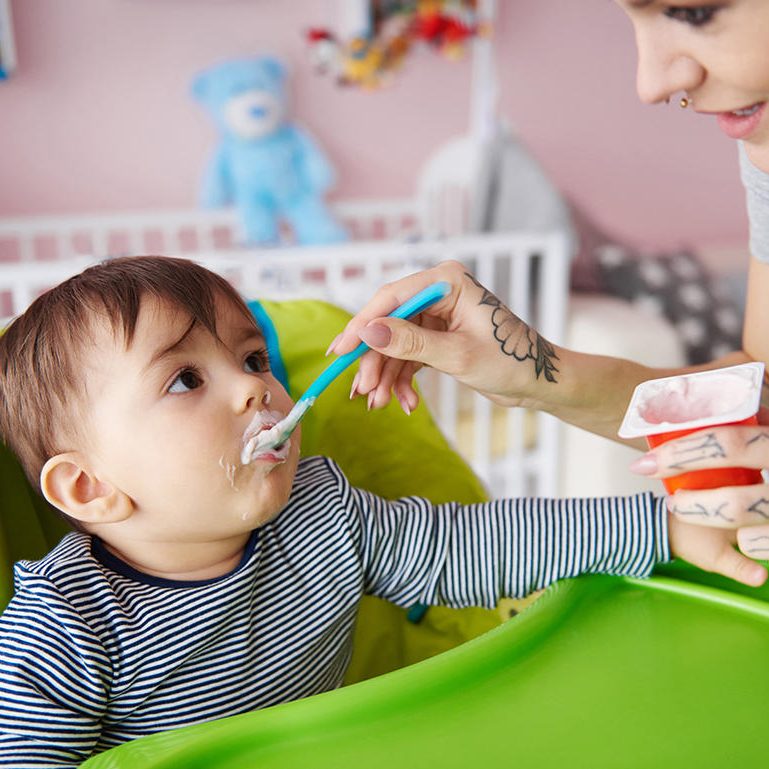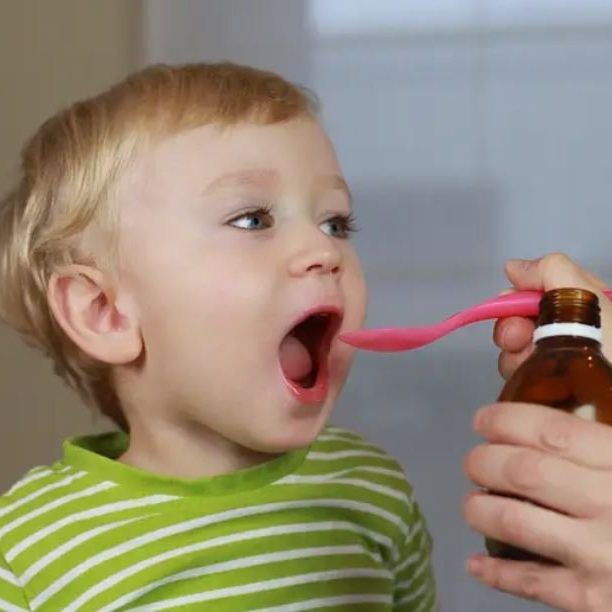Overview of the Challenge
Understanding how to get a toddler to take medicine is often a test of patience. For many parents, it represents a familiar yet daunting task. The mere mention of medicine time can lead to grimaces, tears, or a full-blown meltdown. Medicine’s bitter taste and the associated discomfort only intensify a toddler’s resistance. Compounding the issue, ensuring the correct dosage is ingested is crucial for the medicine to be effective. This delicate balance between necessity and aversion is the challenge that must be navigated. Through empathy, creativity, and a little ingenuity, the act of administering medicine can become less of a struggle and more of a success.
Setting a Positive Tone for Medicine Time
A gentle approach can ease medicine-time tensions. Positivity is key when it comes to giving toddlers medicine. Your calm demeanor and a cheerful atmosphere can create a more accepting mood in your child. Start with a smile and maintain a soothing voice. Acknowledge that it might not taste great but remind them of the benefits in simple terms. If they see you’re not anxious, they’re less likely to be as well.

To help set this positive tone:
- Use encouraging language, ‘You’re so brave for taking your medicine!’
- Make medicine time part of a fun routine, like after a favorite story.
- Praise them for small victories, even if it’s just tasting the medicine.
- Keep your own emotions in check; kids can pick up on stress easily.
An upbeat approach does wonders for a child’s receptiveness. Stay patient, and remember consistency is crucial for creating a stress-free environment. Infuse medicine time with positive associations, and it can transform from a dreaded ordeal into a manageable part of their day.
The Honesty Approach: Discussing Medication with Your Child
When it comes to giving toddlers medicine, honesty is often the best policy. Being upfront about medication helps build trust between you and your child, leading to less resistance. Here are some tips to discuss medication with your child effectively:
Explain the Importance of Medicine
Begin by explaining that medicine helps their body fight the ‘bad germs’ making them feel unwell. Use simple words and analogies they can grasp, such as likening medicine to a superhero fighting villains.
Involve Them in the Process
Let your child know they’re taking medicine and why it’s necessary. For example, say, ‘This medicine will help your sore throat feel better so you can play again.’ Involving them gives a sense of control and cooperation.
Be Honest About the Taste
Acknowledge that the medicine might taste different, but emphasize its purpose. You could say, ‘It may not taste like your juice, but it’s going to make you stronger.’ This sets realistic expectations.
Offer Choices Where Possible
If there are options for flavors or forms of medicine, let them choose. Decision-making empowers them and can diminish the battle of wills.
Reinforce Trust
Ensure your child knows you are there to help them get better. Remind them that taking medicine is one way you’re working together to help them feel well.
Remember, staying honest and communicating openly about taking medicine can make the process smoother for both parents and toddlers. The goal is to foster understanding, trust, and cooperation in the journey to wellness.

Flavor and Disguising Techniques
how to get a toddler to take medicineParents often need to get creative when their toddlers refuse to take medicine. Subtle disguises may turn bitter pills into a hassle-free experience. Consider these flavor and disguising techniques to help the medicine go down:
- Mix With Favorite Flavors: Add medicine to a teaspoon of honey or chocolate syrup. Choose strong flavors to mask the taste of the medicine.
- Use Food Camouflage: Hide liquid medication in a small amount of applesauce or yogurt. Make sure your child eats it all for the full dose.
- Flavored Medicines: Ask your pediatrician if the medication comes in different flavors. This simple change can make a significant difference.
- Cold Treats Trick: Offer a cold treat like a popsicle before medication. It can help numb the taste buds.
- Creative Presentation: Serve the medicine in a unique cup or with a special spoon. A new presentation might intrigue your toddler enough to try it.
- Practice Transparency: If you mix the medicine with food, tell your child. Explain why it’s hidden and the importance of taking it.
Using these tactics, you can turn medicine time into a more pleasant experience. Remember to check with your healthcare provider before mixing medication with food or drink to ensure it’s safe. Keeping an honest dialogue about medication is also crucial for maintaining trust with your toddler.
Empowering Children with Choices and Control
Letting toddlers make choices boosts their sense of control. This is key when it’s time for medicine. Offer simple options to empower them. For instance, ask if they want a spoon or a syringe for their liquid medicine. Even choosing the medicine flavor can help. This doesn’t mean they control the need for medicine. But it gives them a say in how it happens. Here are some strategies to empower your child:
- Offer Simple Choices: Ask ‘Do you want your medicine in a cup or using a syringe?’ or ‘Would you like to take your medicine before or after brushing your teeth?’
- Let Them Choose the Flavor: If the medicine comes in flavors, let them pick one.
- Involve Them in the Process: Show them the medicine and explain its purpose. Say ‘This will help get rid of your cough so we can go to the park.’
- Provide Them Control Over Little Things: Allow them to hold the medicine cup or push the syringe plunger under your guidance.
- Acknowledge Their Decisions: Praise them for making a choice. Saying ‘Good job deciding!’ acknowledges their role and may ease the process.
Remember, the goal is to make your child feel involved. They are more likely to take their medicine without a fuss. Always give options in line with their treatment plan. Keep choices simple and suited to their age.

Special Techniques for Swallowing Pills
How to get a toddler to take medicine? For toddlers transitioning from liquid medicine to pills, swallowing can be intimidating. However, with some clever strategies, parents can ease their child into this new phase. Here are some special techniques to help with swallowing pills:
- Start with small, manageable pieces: Children can practice with tiny candy pieces similar to pill size. This builds confidence and skill.
- Use a ‘pill swallowing cup’: Some cups are designed with a pill holder. They encourage proper head positioning and swallowing without distress.
- Implement the ‘lean forward’ technique: Teach your child to lean forward slightly when swallowing. This can make pill swallowing easier.
- Coating the pill: Slightly moisten the pill to make it slippery. This can help it slide down more smoothly.
- Breaking up the routine: Give a tiny portion of their favorite drink between pill attempts. It breaks monotony and offers a small reward.
These methods promote successful pill-taking experiences. Always consult with a pediatric healthcare provider before employing new techniques to ensure safety and appropriateness for your child.
Establishing a Medicine Routine
Creating a medicine routine can help toddlers anticipate and accept medicine time. Here’s how to establish a routine:
- Set a Specific Time: Choose a time each day for medicine, like after breakfast.
- Consistent Sequence: Follow the same steps each time, such as after brushing teeth.
- Visual Cues: Use a chart to mark medicine times, offering a clear routine.
- Involve Your Toddler: Let them help with the process, such as picking a special cup.
- Associate with Pleasant Activities: Read a book or play a game after taking medicine.
A medicine routine makes the experience predictable and less daunting for your toddler.
Creative Distractions and Rewards
Implementing creative distractions and rewards can make medicine time more appealing for toddlers. Employ strategies that engage your child’s interest and provide incentives. Here are some effective distractions and rewards:
- Play Their Favorite Song or Video: Distract your child with a beloved tune or clip while administering medicine.
- Use a Reward Chart: Each medicine dose earns a sticker on a chart. After a set number of stickers, they can pick a small toy or treat.
- Invent a Game: Turn medicine time into playtime. Pretend you’re on a space mission or in a jungle adventure as you give the medicine.
- Celebrate Success: Offer praise and hugs after each successful dose. Positive reinforcement can work wonders.
- Offer a Treat: Allow a small, healthy snack after taking medicine. Make sure it’s something they enjoy but don’t get often.
- Give Them Attention: Spend extra time with your child after they take their medicine. Read a book or draw together.
- Provide Choices: Let them decide on the reward in advance. This gives them something to look forward to.
Distractions and rewards help shift focus away from medicine’s unpleasant aspects. Experiment to find what resonates best with your child. Their cooperation often increases with the right motivation.
Professional Advice: When to Seek Help
If your efforts to get your toddler to take medicine don’t work, seek professional advice. Pediatricians often have tricks and tips from experience. They can also check if the medicine’s form can change. This might mean switching from pills to liquid or finding a flavor your child likes.
- Ask about different forms: Liquid, chewable tablets, or dissolvable strips might be available.
- Inquire about flavors: Some medicines come in flavors that kids find more appealing.
- Discuss long-term strategies: For chronic conditions, a pediatrician can suggest techniques.
- Consider a referral: Sometimes, a child psychologist can help with severe aversions.
If your child vomits the medicine or has a bad reaction, call your pediatrician. In case of an emergency, don’t wait; go to the hospital. Safety comes first when administering medicine to a child.
Safety Considerations and Final Tips
When helping your toddler take medicine, safety is crucial. Keep these final tips in mind:
- Store Medicines Safely: Keep all medicines out of reach and sight. Use childproof containers.
- Follow Dosage Instructions: Always stick to the prescribed dosage. Don’t guess amounts.
- Check for Allergies: Before first use, ensure your child isn’t allergic to the medicine.
- Never Call Medicine Candy: This prevents them from wanting it when it’s not needed.
- Watch for Reactions: Observe your child after giving medicine for any unusual reactions.
- Check Expiration Dates: Expired medicine can be less effective or harmful.
- Don’t Mix Medicines: Unless your doctor says it’s okay, don’t combine medications.
- Praise Your Child: Celebrate their bravery every time they take medicine. It motivates.
- Seek Help If Needed: If you struggle, ask a healthcare professional for advice.
- Stay Calm: If it’s a battle, take a break. Both of you can try again later.
- Review Technique: If a method isn’t working, try another one from this guide.
Remember, patience and consistency are your best tools for success. By following these tips, medicine time can become a safe and less stressful experience for everyone involved.

